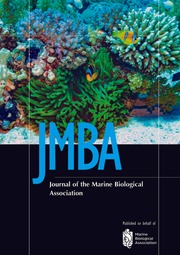Article contents
Taxonomic significance of tunic spicules in photosymbiotic ascidians: a quantitative and molecular evaluation
Published online by Cambridge University Press: 09 December 2009
Abstract
Many didemnid ascidians have calcareous spicules in the tunic. Since the spicules of each species have a specific shape and size-range, they are often regarded as an important character for taxonomy. To evaluate the taxonomic significance of tunic spicules, a quantitative survey of spicule size and shape was combined with a molecular phylogeny inferred from the partial sequence of the cytochrome c oxidase subunit I (COI) gene in some groups of didemnid species that are supposedly closely related. This study revealed the presence of substantial intraspecific variations in the shape and size of tunic spicules. The spicules are, therefore, not always crucial features discriminating species, particularly among related species. Although tunic spicules are potentially valuable features for didemnid taxonomy, their intraspecific variation should be carefully considered before they are used as a key character for species identification.
- Type
- Research Article
- Information
- Journal of the Marine Biological Association of the United Kingdom , Volume 90 , Issue 5 , August 2010 , pp. 1065 - 1071
- Copyright
- Copyright © Marine Biological Association of the United Kingdom 2009
References
REFERENCES
- 9
- Cited by


